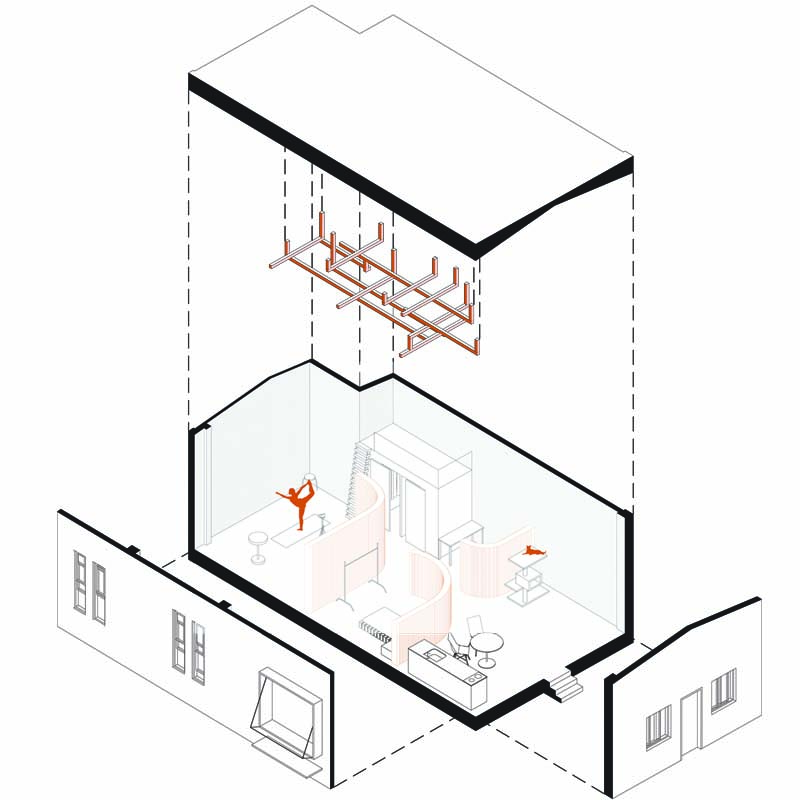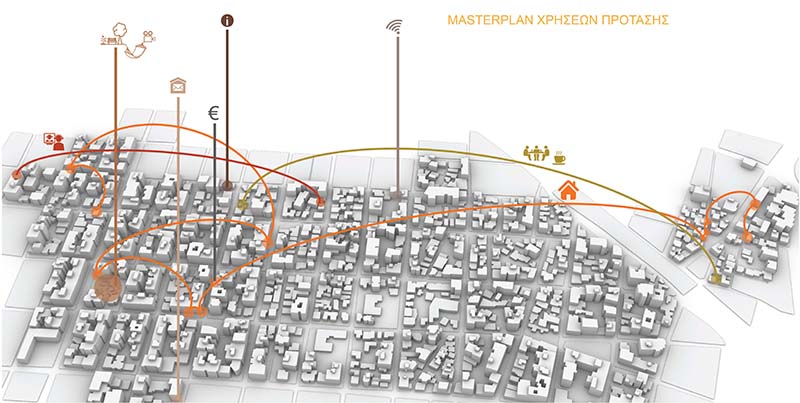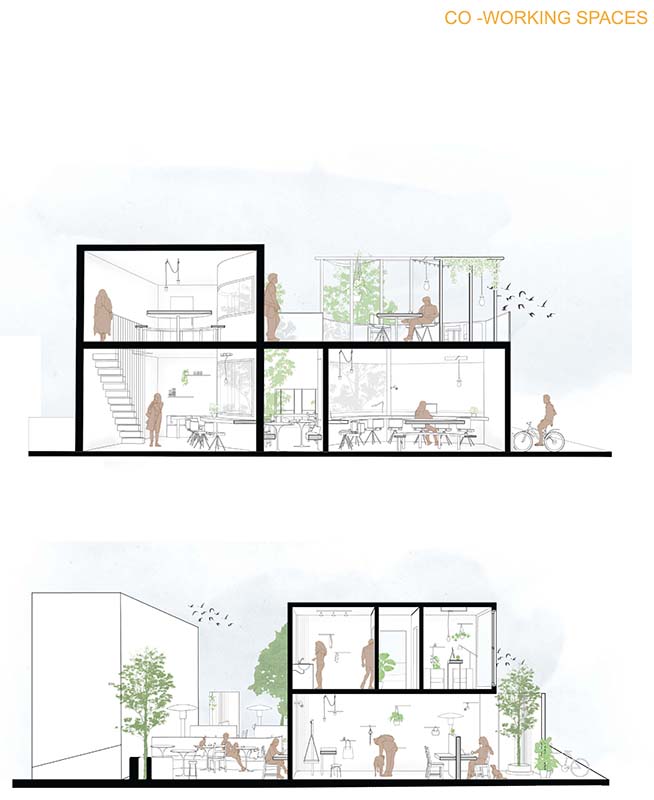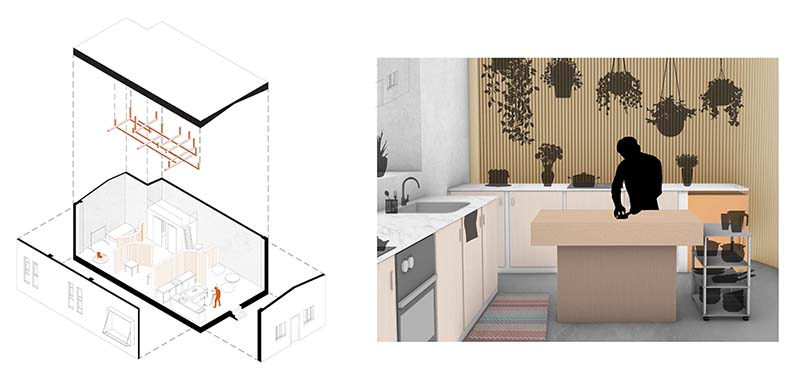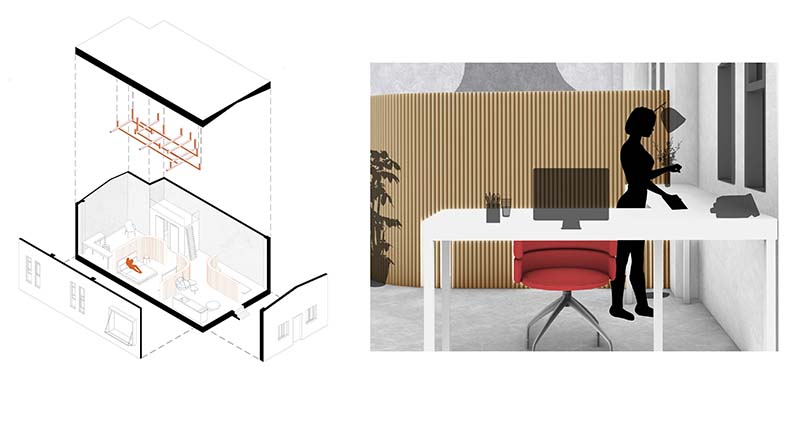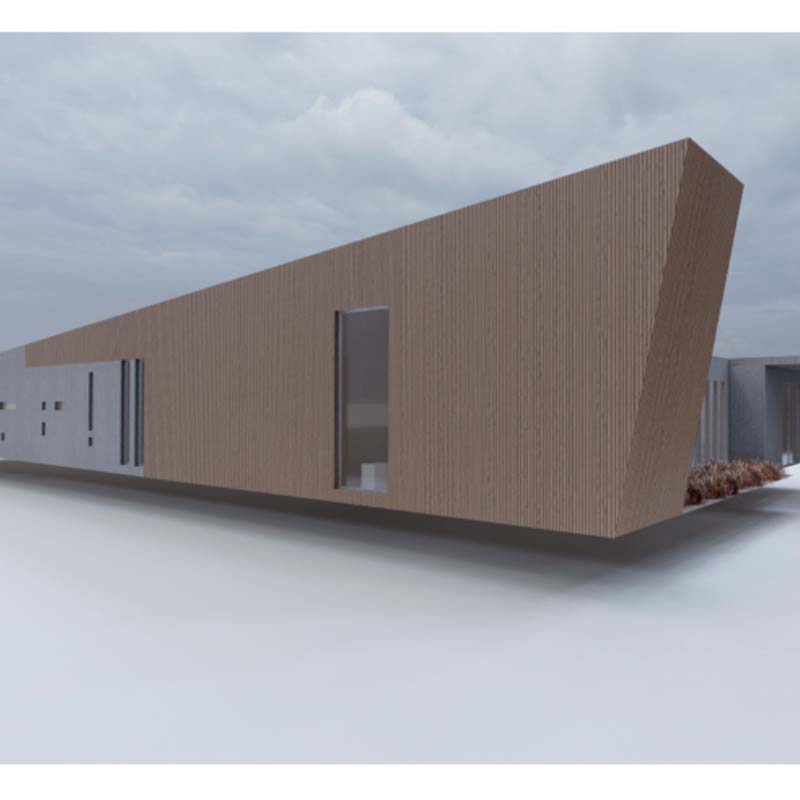

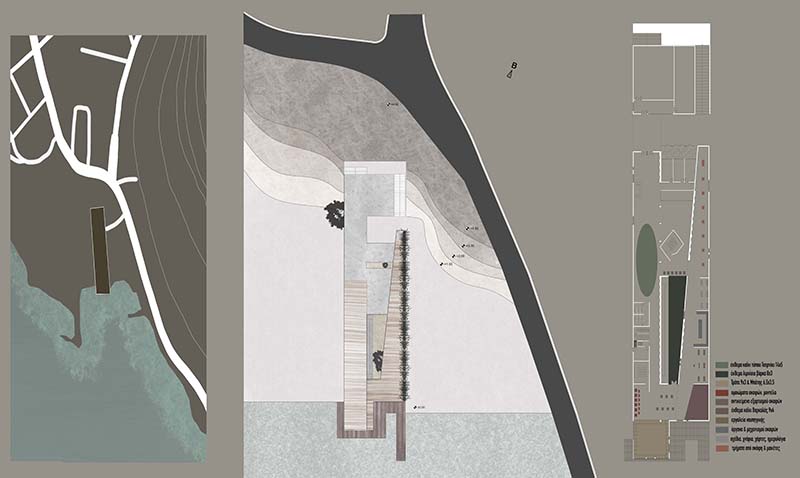

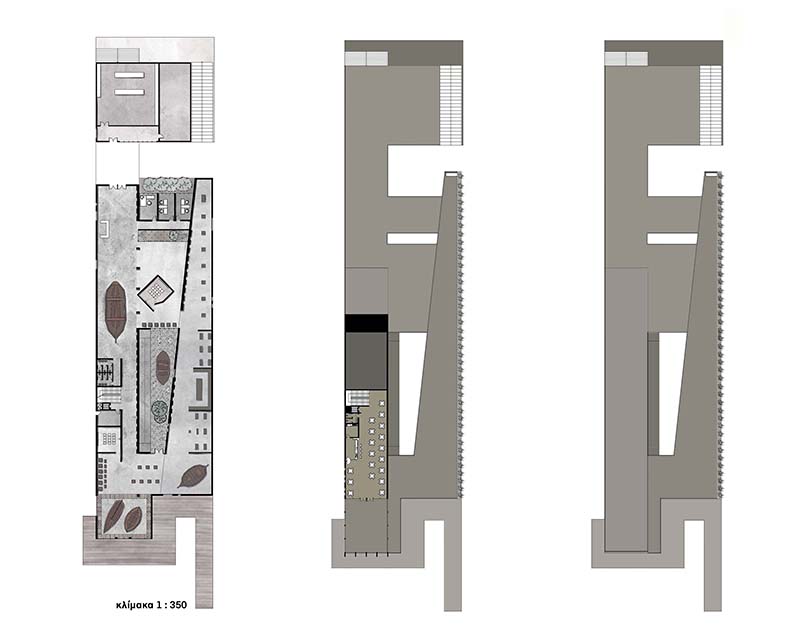

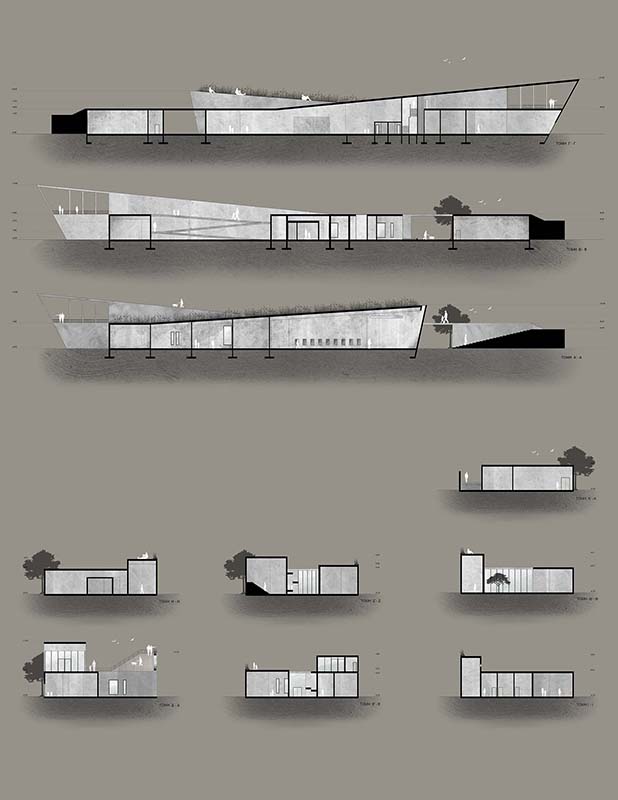

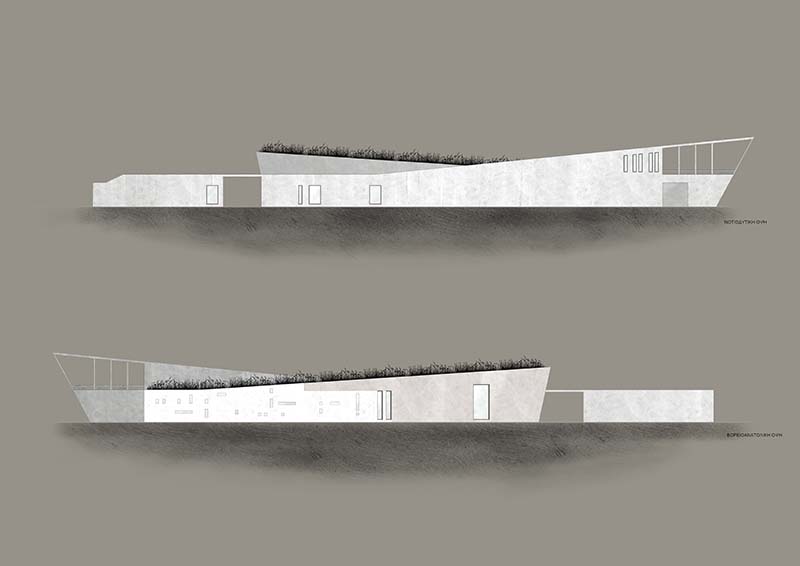

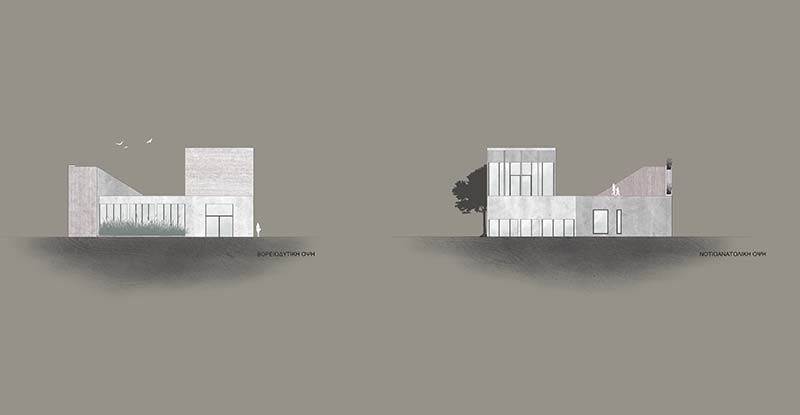

This thesis concerns the design of a museum with the aim of preserving traditional shipping as well as upgrading the area of Anavros in the city of Volos, part of which remains neutralized, of no interest to the citizens.
On the occasion of the Εuropean Union's program, which seeks the destruction - cutting of traditional boats, which contributed to the destruction of maritime shipbuilding and the cultural heritage of Greece, the creation of a museum for the preservation and safeguarding of traditional shipping, will preserve and spread the knowledge that almost disappeared.
The aim is to create a museum that will house the archives of the city of Volos, exhibition areas of real boats, shipbuilding models and mock-ups, as well as tools, plans, patterns and accessories for boats. It will be possible to carry out actions and activities of groups in the sector, as the premises of the Naval Club of Volos are located on the plot, where they will aim to introduce students and the general public to shipbuilding.
However, apart from the shipbuilding side, the building itself is called upon to upgrade the area, located on a plot with a slight slope, under the hill of Goritsa, which ends at the coast above the sea, being an element of harmonious union, without dividing the urban landscape. Its composition and design will follow the aesthetic principles of a modern architectural approach regarding the penetration of nature into the urban landscape, and its harmonization with it.The orientation and the basic outlines of the building are based on the logic of launching ships from the water towards the land, which is why part of it seems to enter the water, but without interrupting the coastline.
The location was deemed the most ideal, as it is in a short distance from the center of Volos and due to the natural landscape reminiscent of a carnage, it offers the right conditions for observing, studying and learning shipbuilding activities, attracting visitors and enlivening a deserted piece of the city web.
Supervisor: Maniatis Konstantinos
Reference Number: 978
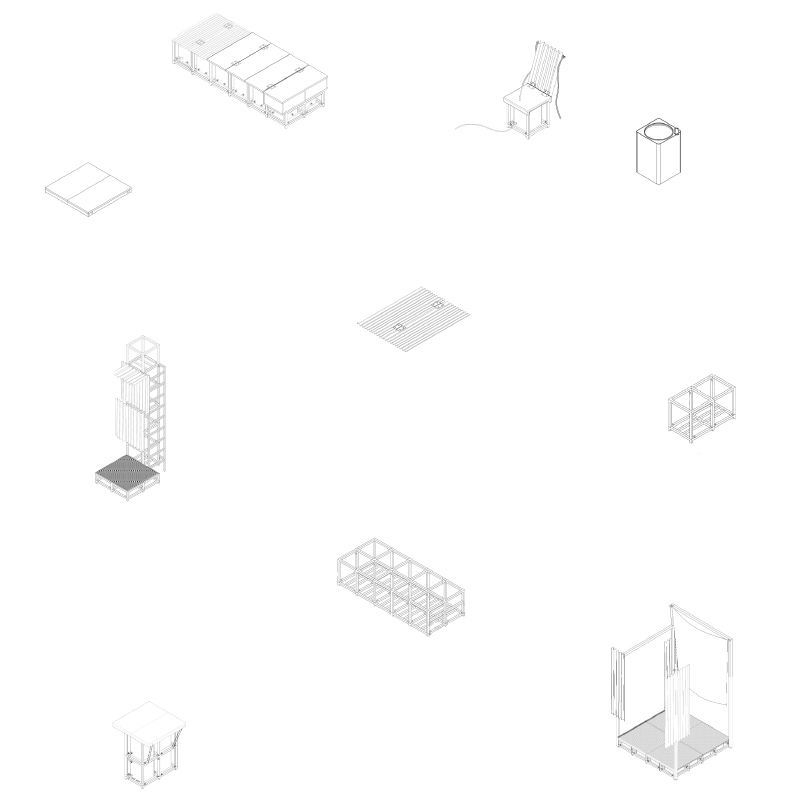

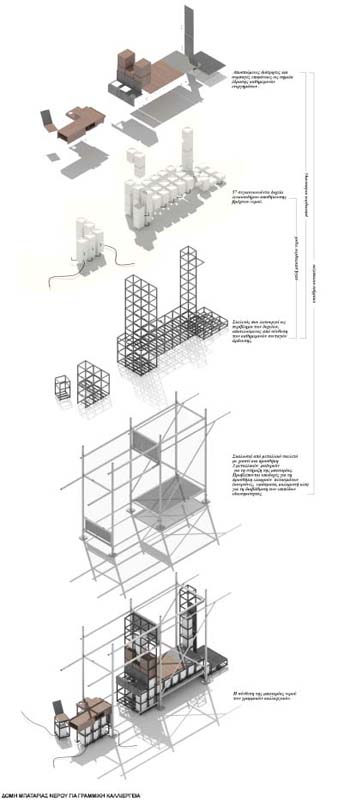

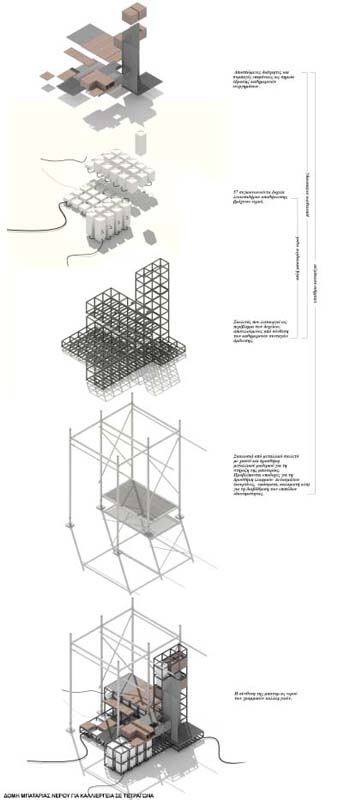

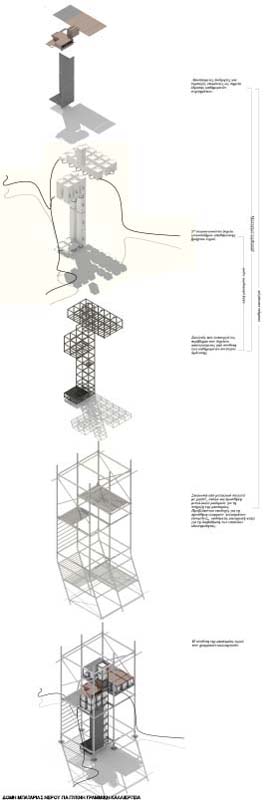

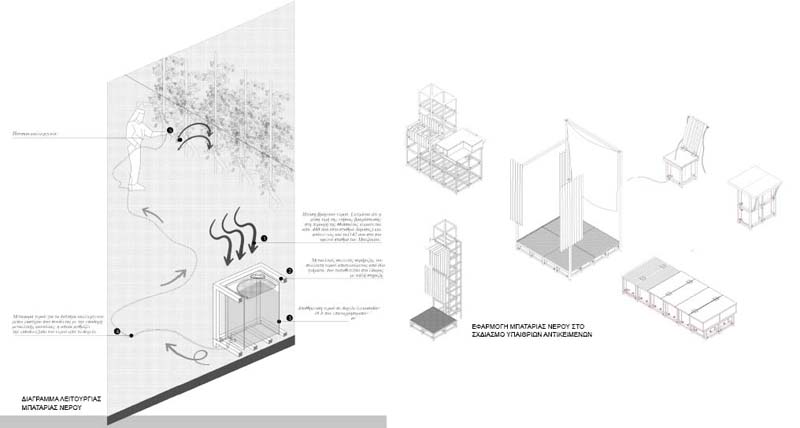

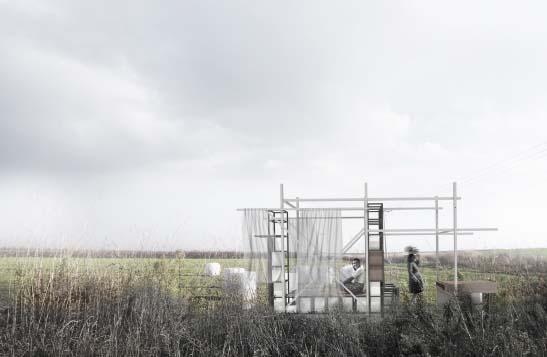

Main reference of this project is the diverse and constantly changing character of the countryside. Historically, greek countryside stands as a place of productive activities of the primary sector related to manual labor. Since the end of the 20th century, political, social and economic transformations have had a significant impact on the way it is perceived and interpreted. Decisions that have been taken on sustainable development by national and European agricultural policy combined with the phenomenon of urbanization of recent decades and the dismantling of traditional communities put in the foreground emerging social and environmental problems, such as the exploitation of natural and human resources. Extensive irrigation system in combination with the laborious way of dealing with the countryside raises concerns and questions about the way and the scale of management of the rural area.
Focusing both on humans and the usual water-consuming crops of the Thessalian countryside, the present dissertation proposes alternatives for their water supply through the temporary habitance of the countryside. Using as a synthetic tool the re-use of an object found in the Thessalian countryside, it is created a list of installations that are based both on the plant’s water needs during the germination period and on daily living needs of the cultivator in the countryside. Installations are structured through the reinterpretation of household objects and are characterized by variability, so as to be transferred and placed easily on the field of cultivation according to the user’s needs. Their presence in the field - portable or fixed - creates an artificial ground for daily activities, being rest tools for the user after various cultivating tasks.
Installations create different recipes, which aim to provide energy to both the grower, through his rest and the plant, through the supply of water. Their compositions create bigger structures that serve as temporary shelters in the countryside. They propose different ways of pairing house and field, labor and rest, they define new ways of appropriating the countryside, while trying to restore the lost rural idyll to the imagination of each cultivator.
Supervisor: Kotionis Zissis
Reference Number: 929
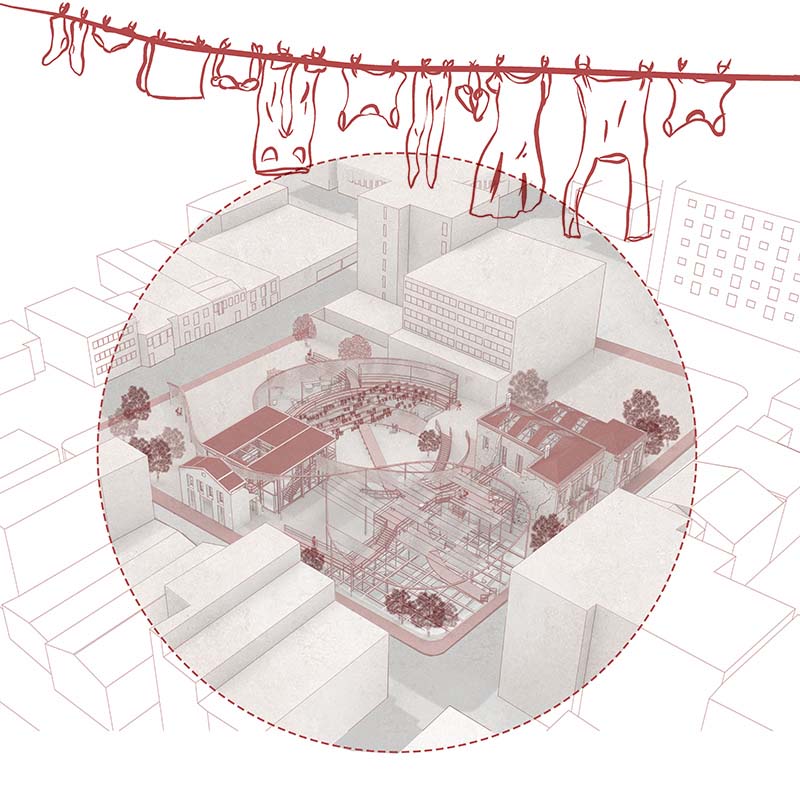

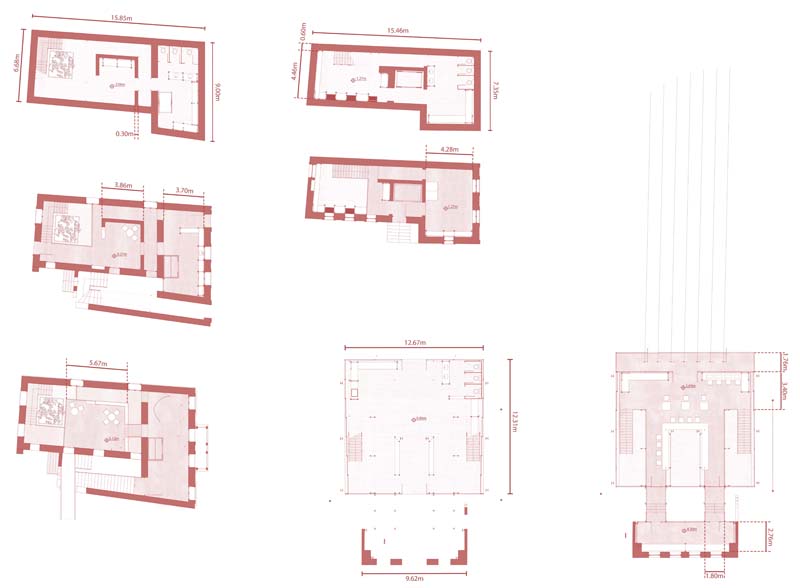

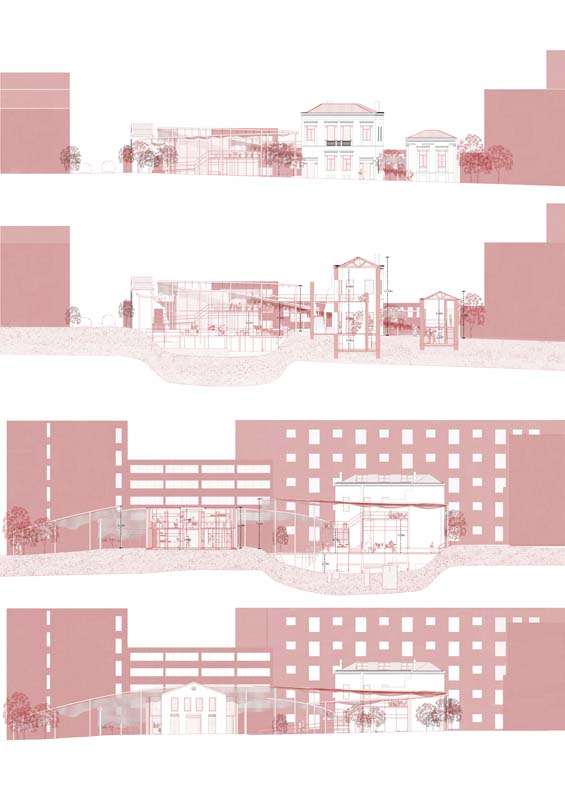

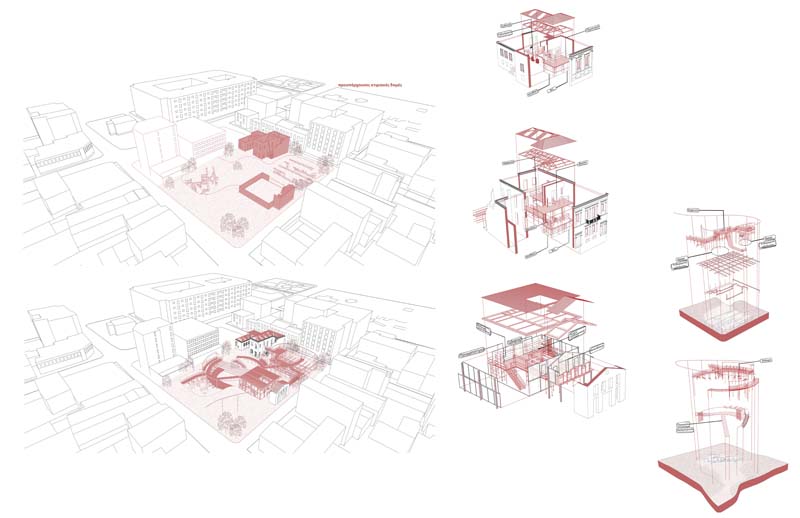

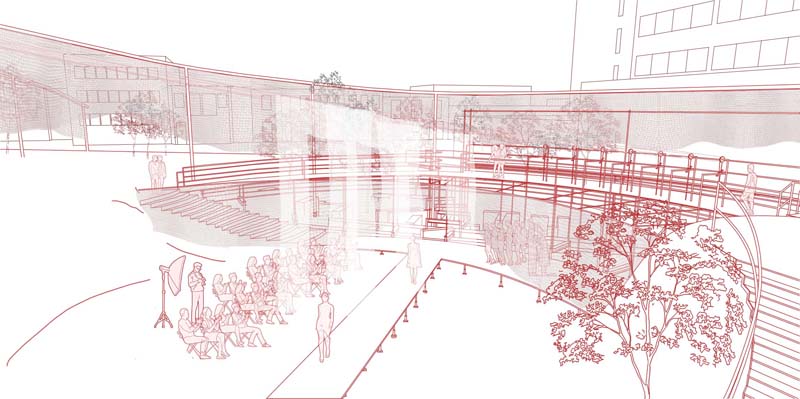

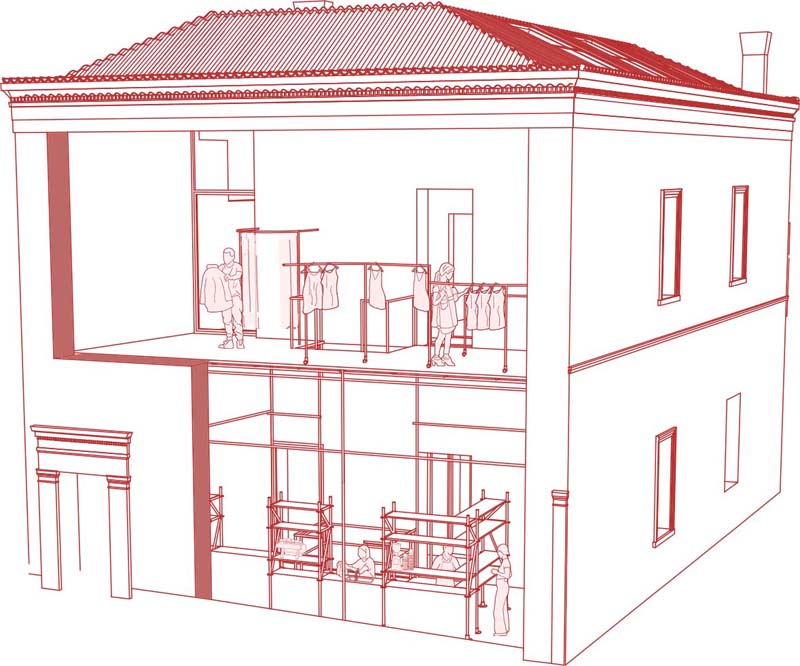

The subject matter of this thesis is the suggestion of the utilization of three abandoned infrastructures of a plot in the center of Athens, with the goal of reusing them and simultaneously activating the urban fabric surrounding them. The district of Psiri was chosen as the study area, where a tendency of depreciation was noticed as far as the building stock and the degradation of the urban fabric are concerned.
Looking back on previous decades, traditional art workshops and leather, shoe and textile crafts prevailed in the district of Psiri. Over the years these functions started being eliminated, and their commercial character began to be replaced by uses that serve the tourism and entertainment sector instead. This way, the artistic and creative expression that took place in the area ceased, due to the lack of conditions and infrastructure. At the same time, immigrant population in the area keeps increasing, but without achieving their full integration into society, resulting in the creation of ghettoization features.
In view of the historical craft character of the area, our goal is the recovery of the secondary sector, which in combination with the tertiary will create new situations and interactions between citizens and visitors. Regarding the uses that are gathered in the areas of the plot we have chosen, we aim to have them stem from the needs of the time, and also from the special features of the area. We also strive for an attempt at active participation of all population groups and at the eradication of the feeling of insecurity that prevails.
Through research of the area, we conclude that the fabric, and more specifically the processing and the general engagement around it, can be the common vocabulary between individuals, as it is the element contained in the stories and traditions of each culture. We try, therefore, to create social spaces for the interaction of individuals, which is achieved through education, artistic employment and creation.
Supervisor: Papadopoulos Spiros
Reference Number: 955
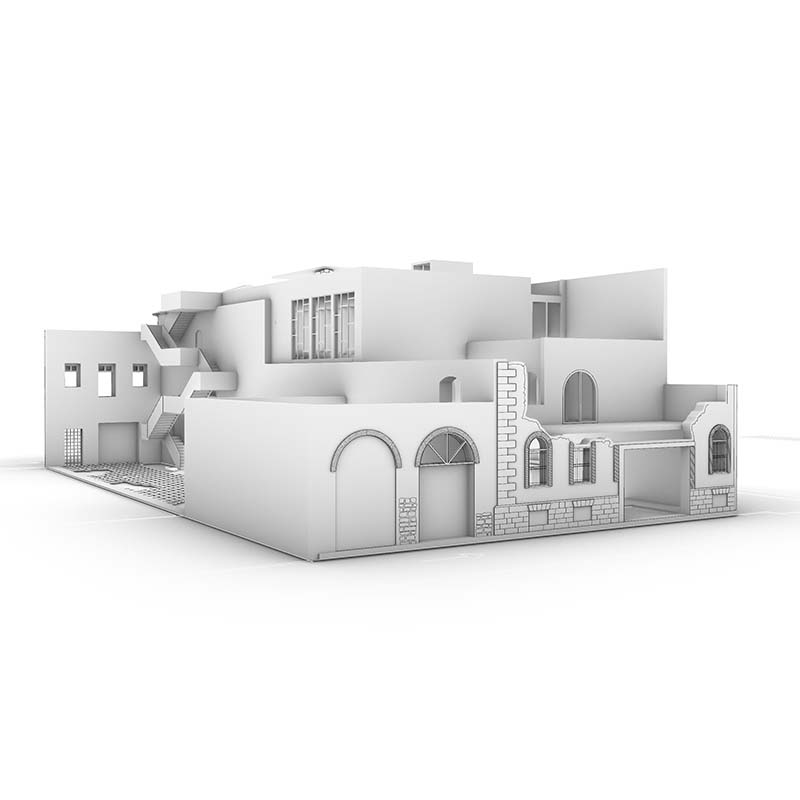

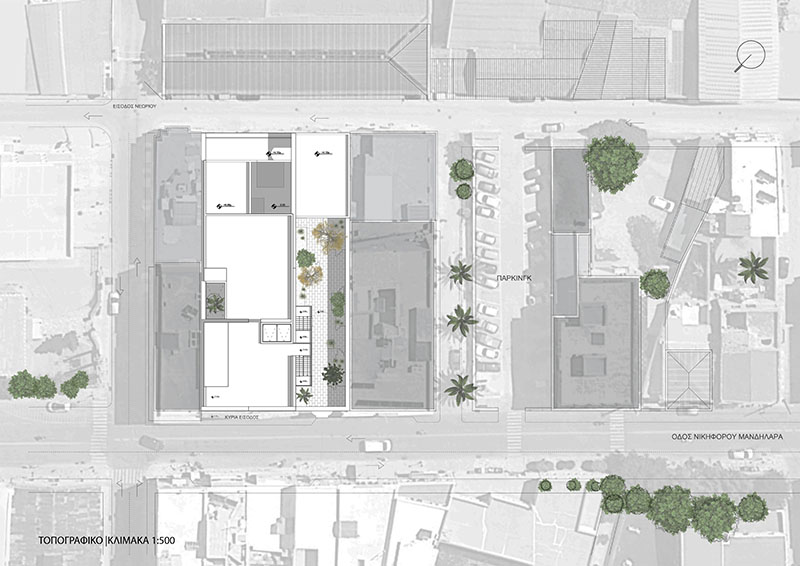

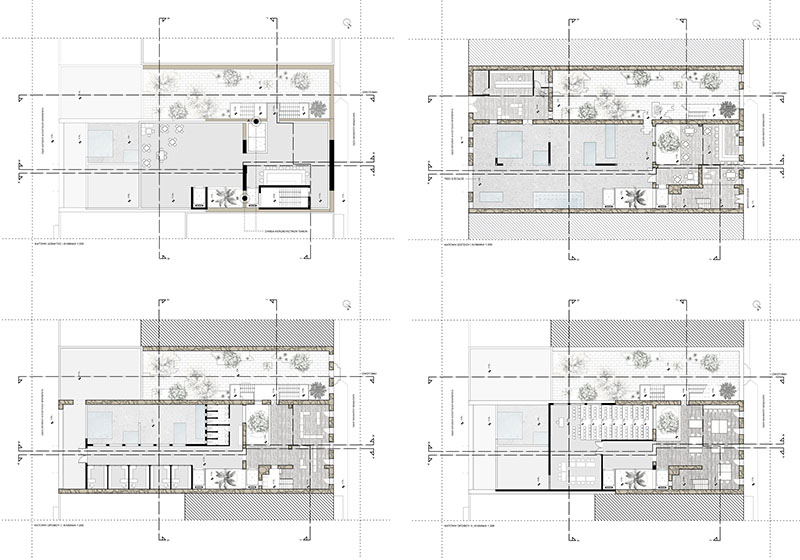

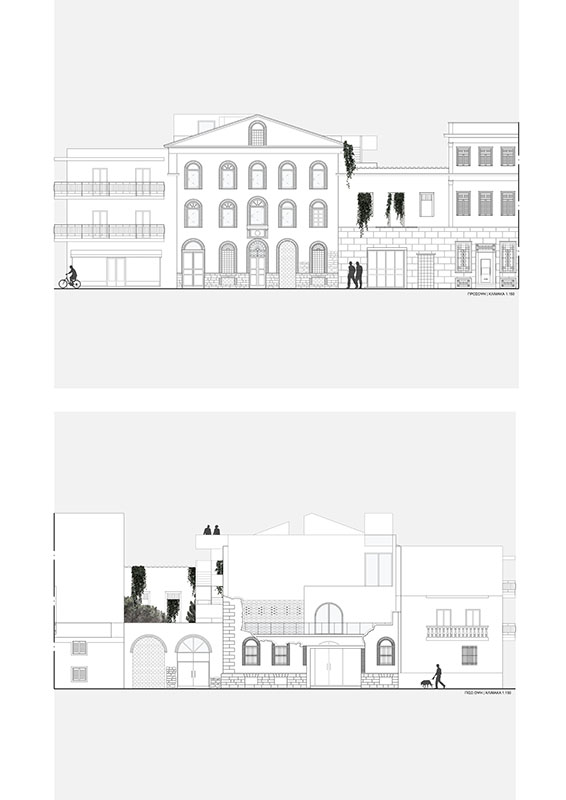

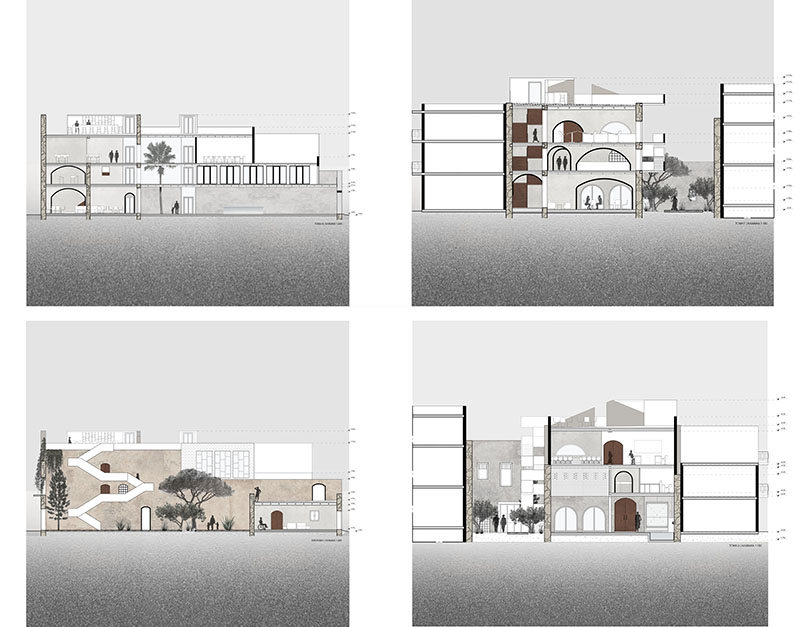

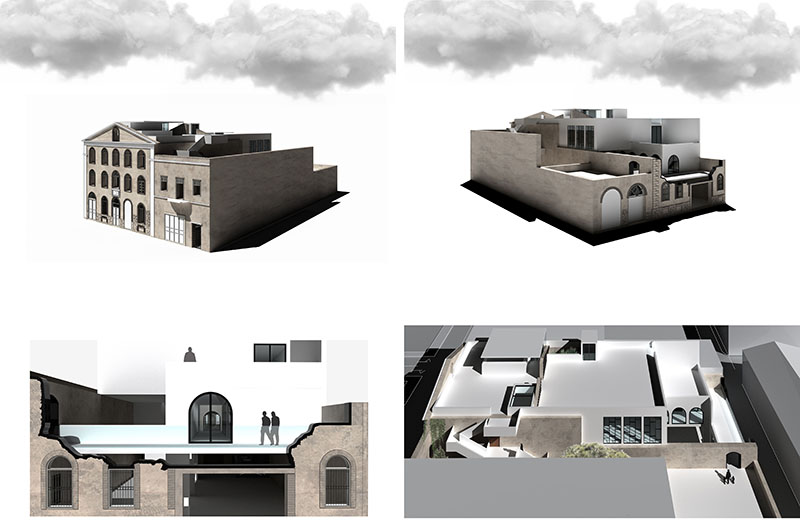

The following diploma thesis has as its task the creation of a new "boundary", as its title states, which will connect the historical industrial past with the new potential, within the protected settlement of the city of Ermoupolis, Syros.
More specifically, it aims, through the restoration and reuse of a former industrial shell, the Veltsos flour mill, with the aim of reintegrating it into the urban fabric, to highlight the importance of industrial heritage and the possibilities that its exploitation can offer today.
The construction of the industrial buildings envisaged the seamless bridging of large openings and their resistance to heavy loads due to heavy machinery, specifications that make these buildings suitable for public use.
Therefore, in the architectural proposal below, uses related to the optimal functioning of the University of the Aegean, of industrial design and cultural events that have been unfolding in recent years on the island, many of them through the voluntary contribution of students, are combined.
As a whole, the building will be a space open to the public, informing, interacting and influencing about the modern culture and the evolution of industry.
Supervisor: Kanarelis Theoklis
Reference Number: 984
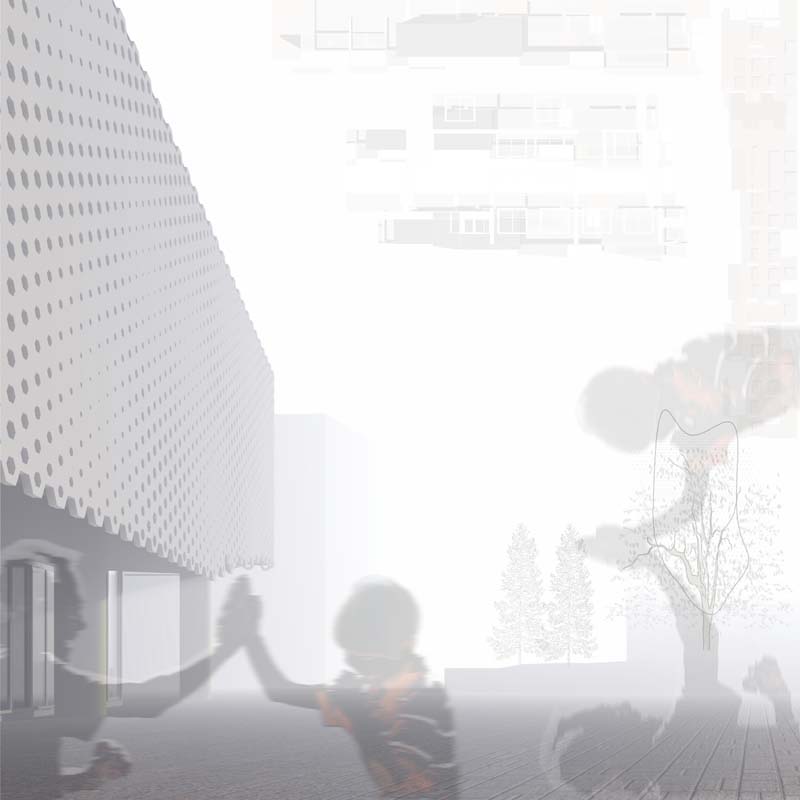

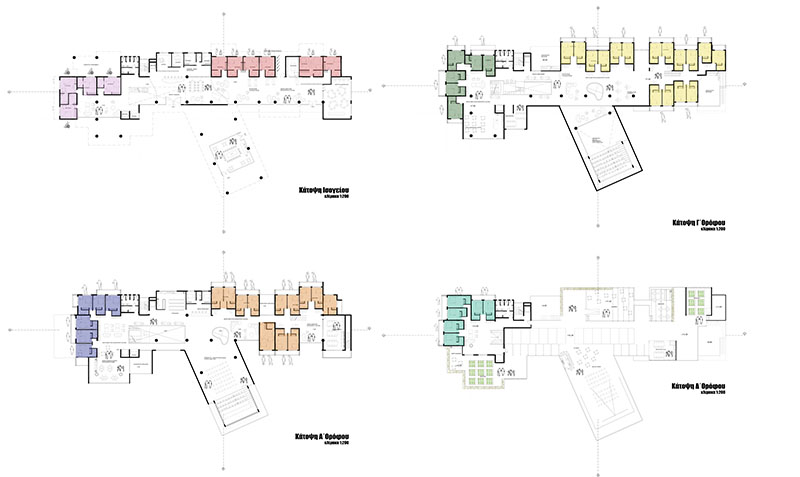

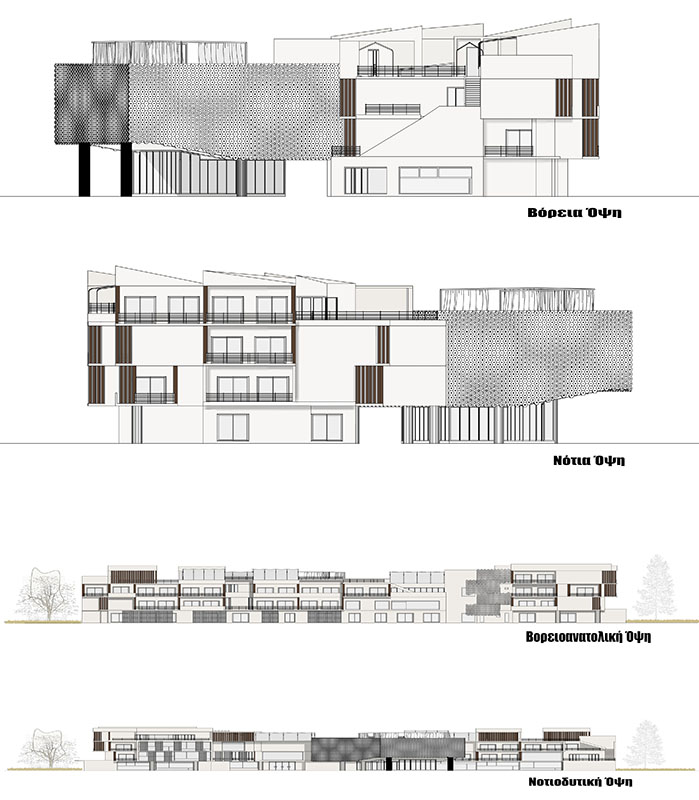

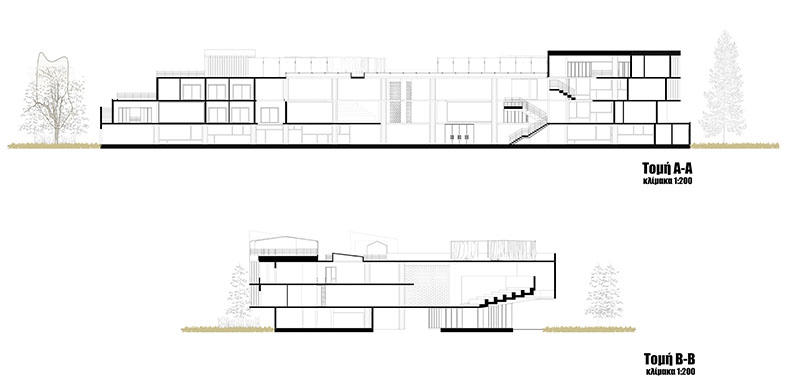

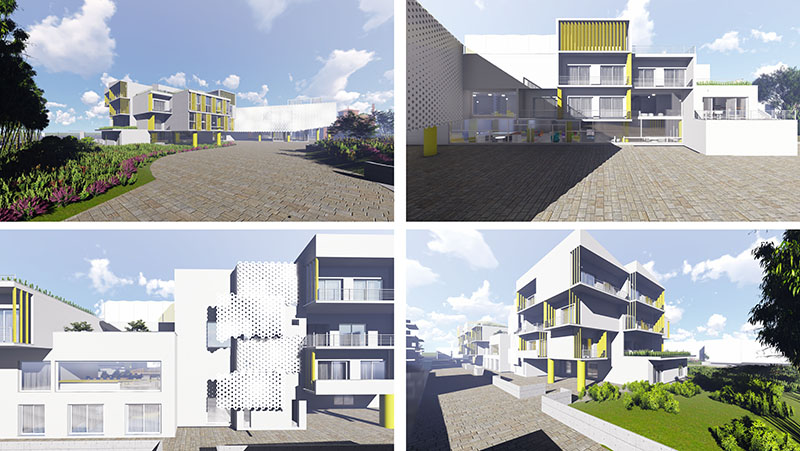

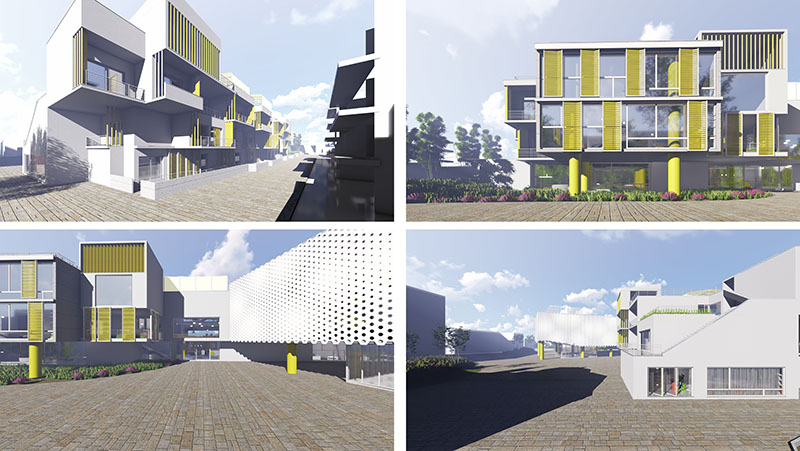

This thesis focuses on the design of closed cohabitation units meant to accommodate population groups that require special care, on the design parameters with regard to the provided care and the empirical way that humans live, coexist and are influenced by a built environment in conditions of social restriction. More specifically, this thesis discusses how people can coexist and interact, both with each other and with the surrounding community, inside the spaces of the orphanage and nursing home, as building structures within which special treatment/care can be provided. In this context, the city of Volos' orphanage and nursing home are housed together in a diverse and pluralistic project, with care provision being the principal factor.
The goal of this study is to investigate the aspects of collective housing with regard to specific age groups, the characteristics of each group and the necessities for care, the way these necessities are expressed spatially and the typological characteristics that facilitate the residents' both individual living and symbiosis.
As the most important factor in the functionality and final configuration of the design of any building structure is intended to be the resident himself, thus the proposed configuration is characterized as "open" and with the ability to easily transform itself, in order to support a diverse range of operations and everyday activities. The study of architectural design in collective housing is particularly useful and a fluctuating concept in the context of Greek society. From this fluctuation a new type of care building is born, aiming to host a mixture of age groups (younger and older people) with shared activities but also interaction with their social environment (the neighborhood and the city of Volos).
Supervisors: Kosma Anthi, Paniyiris Costis
Reference Number: 979
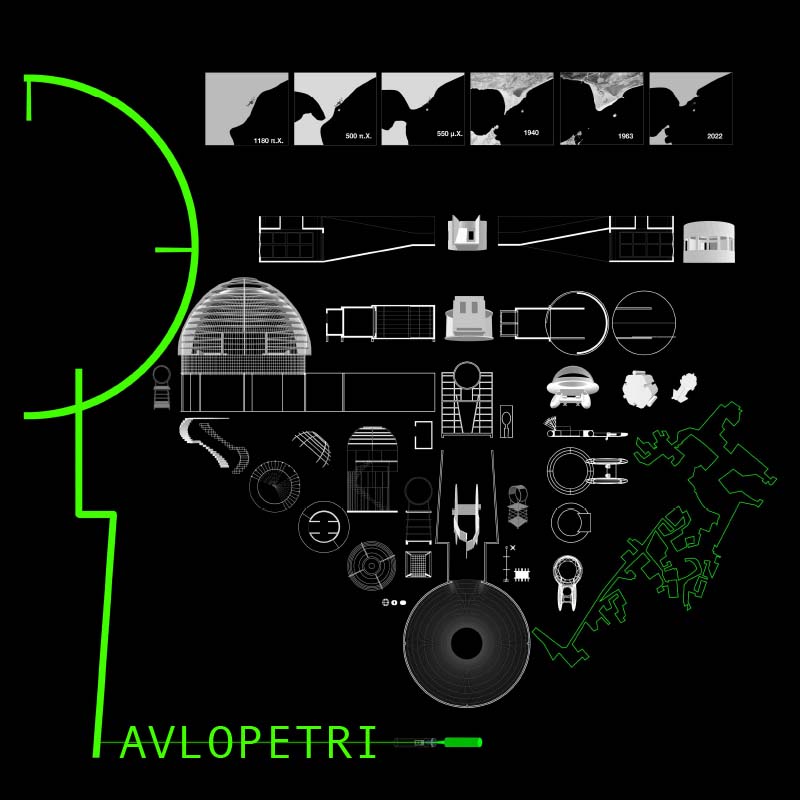

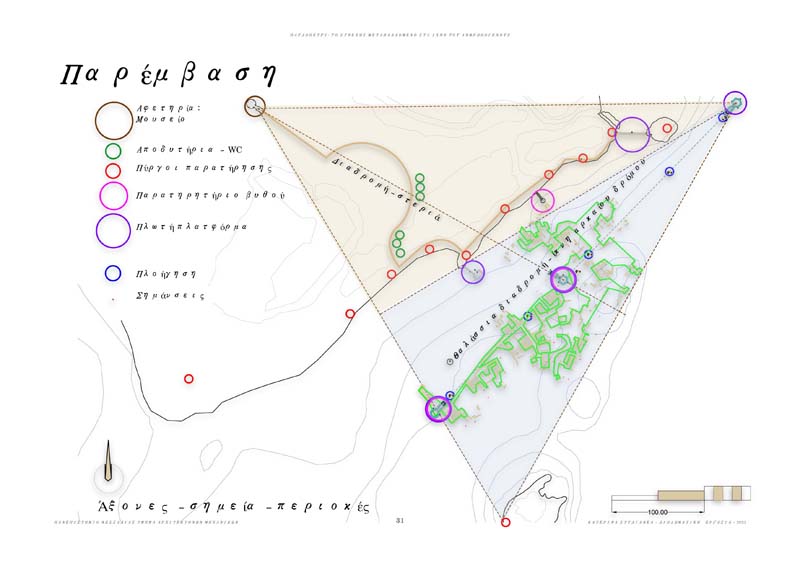

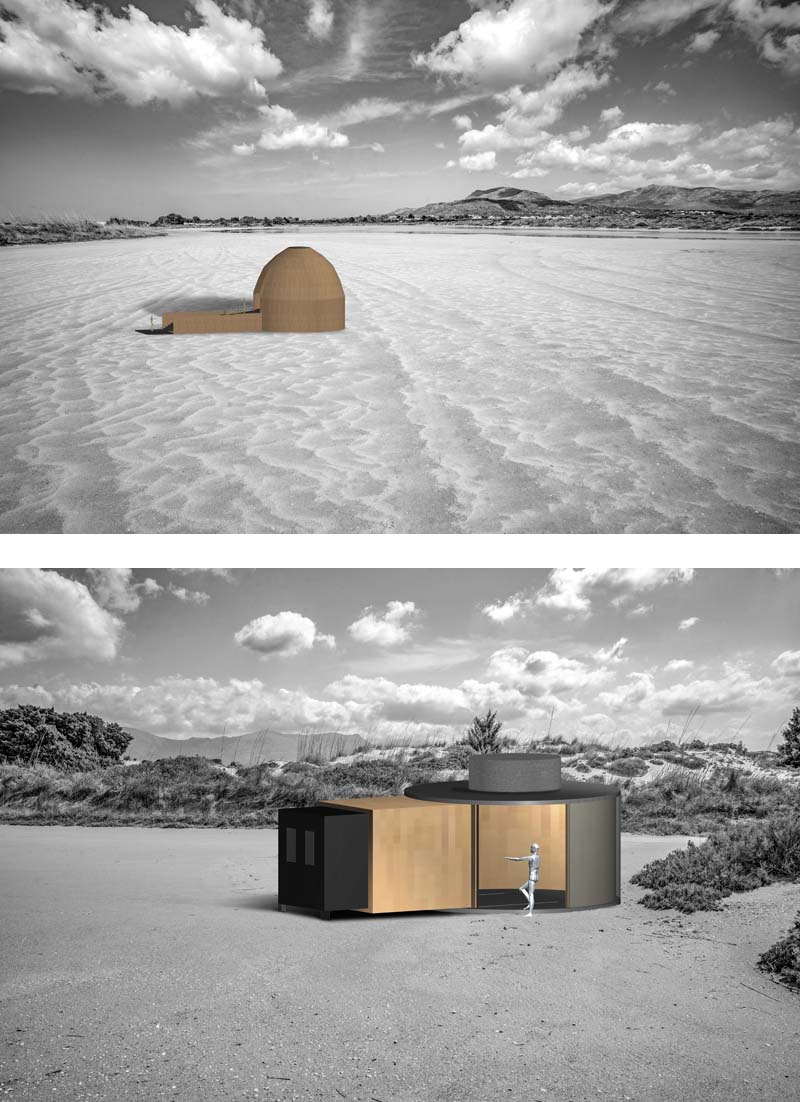

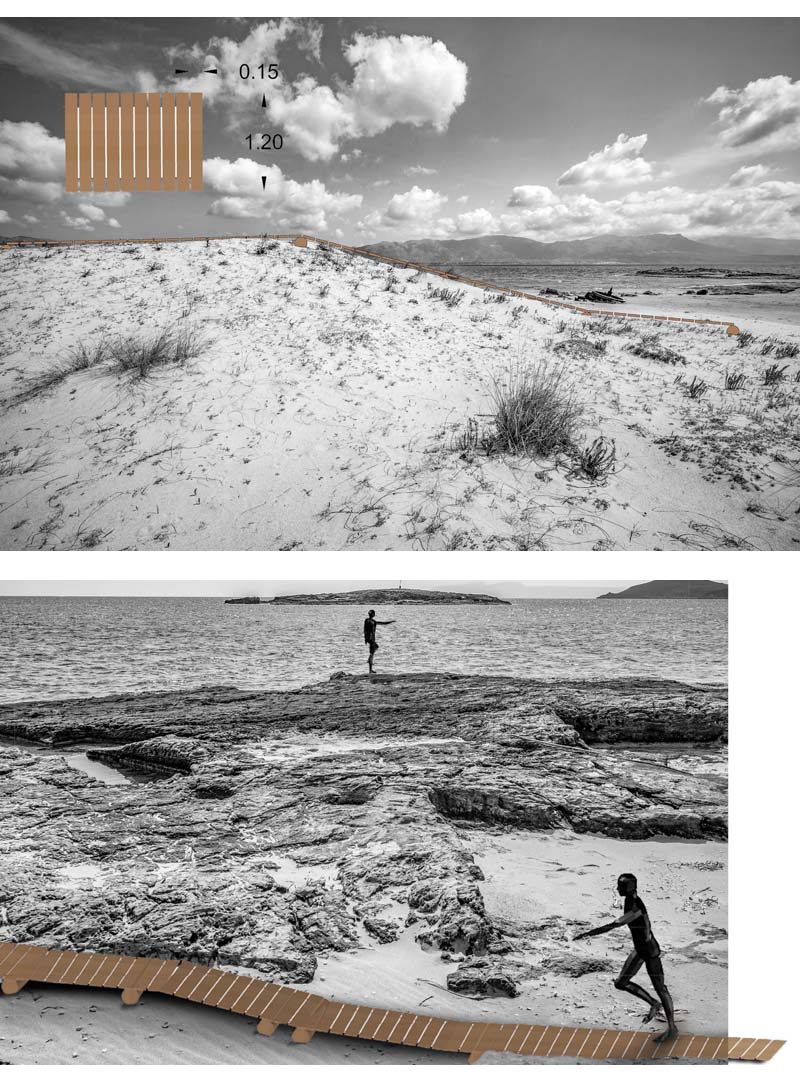

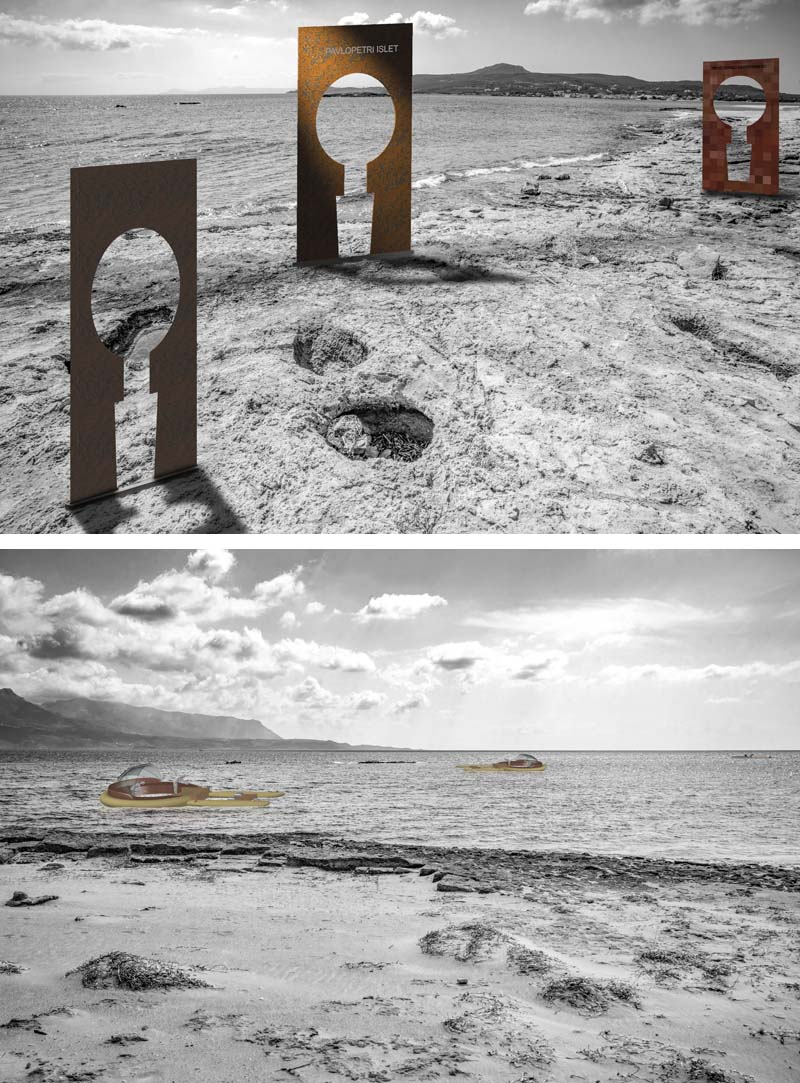

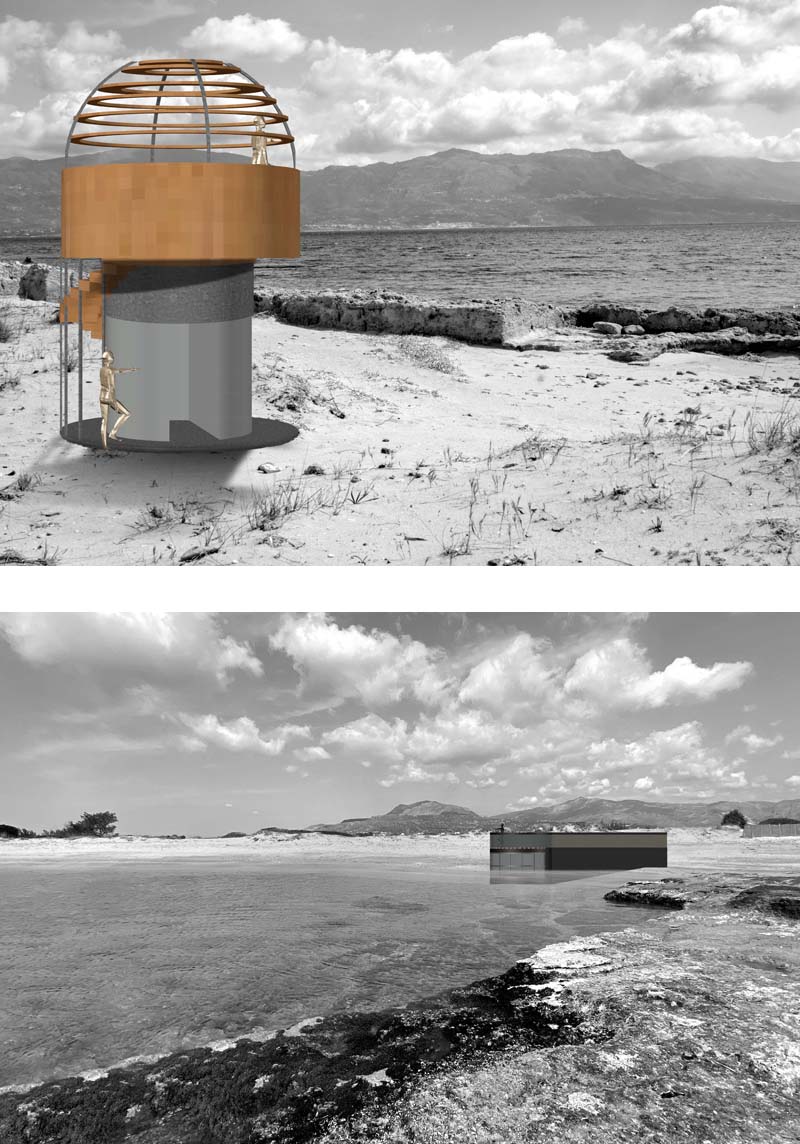

The underwater archaeological Late Neolithic site of Pavlopetri, in Laconia is regarded as a human civilization trace that was submerged following earth'stransformation due to geological, tectonic, climatic phenomena that evolved over centuries. Changes that have produced a much wider underwater archaeological reserve, not only in Greek,but also in European (1), and internationalwaters. Pavlopetrihad remained "invisible" at the sea bottom for ages, until modern technology -regarding archaeological research techniques, imprinting facilities, representation methods- evolved enough to provide it due highlight.
The effects of ongoing climate change have provided the stimulus for wider concern regarding the sustainability of the so called «man-made»in general.
In the present study, taking the 'variabilities' symbolized by Pavlopetri as starting points - the variability in Earth, the diversity as a cultural value, the volatility in Time -both in its brief, seasonal periods and in its long term geological change eras- and the nonconformity in the human experience of navigating in an immersed landscape - we introduce their interpretation into determinant parameters guiding decisions regarding the modern man-made.
How can variability be interpreted into design guidelines?
• With structures that avoid irreversible penetration and damage on Earth.
• By translating archetypes of a cultural inheritance past that «has been» and might become again into modern architectural forms.
• With assemblages that can be transformed, so that they can be placed, withdrawn, repositioned in the given field on a seasonal basis.
• And with elements that virtually reshape the ruin and attempt to become receptors of a different way of approaching the cognitive and experiential activity of touring the cultural, historical space.
A plan of interventions was developed that aims at enhancing the "visibility" of the underwater archeological site, for the visitor. A framework of infrastructure and tools that allow the visitor wander around, dive, cruise through the area, to spot the traces of the submerged settlement, and match the archaeological research information about the findings with the visible remnants of ancient fragments. And at the same time we propose a programme that aims at the protection of the submerged archeological site, while at the same time providing for its marking and projection, with a combination of lighting installation and display of the digitized information.
Supervisor: Papadopoulos Spiros
Reference Number: 951
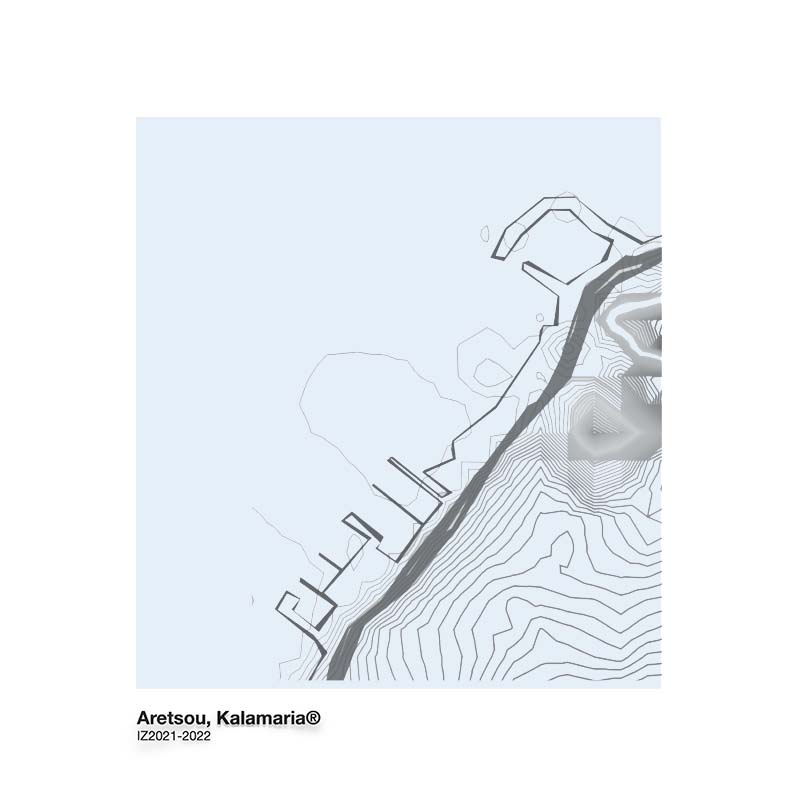

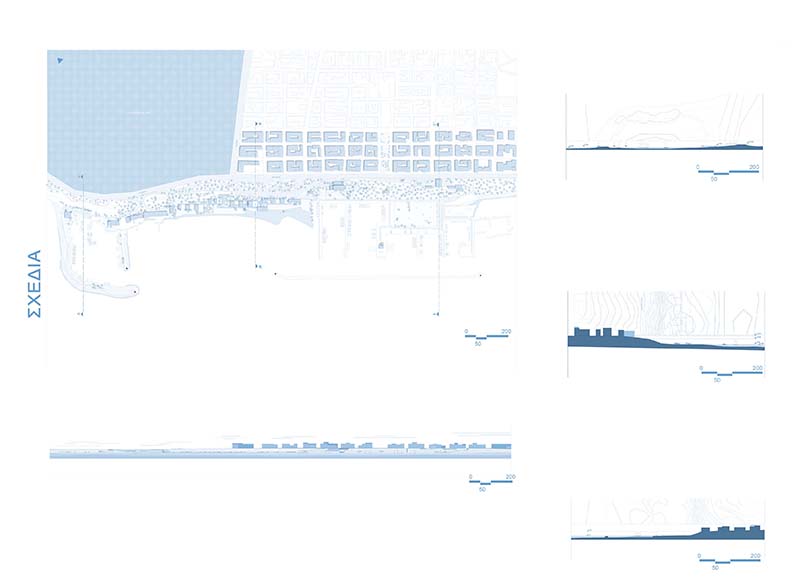

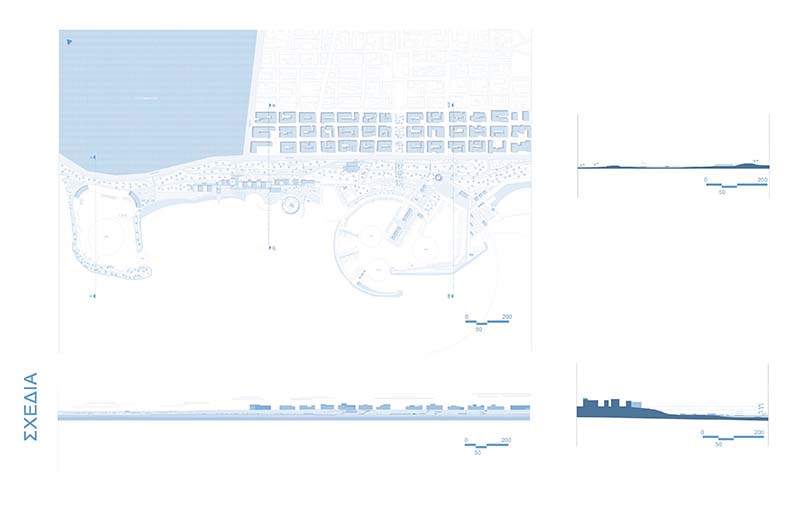

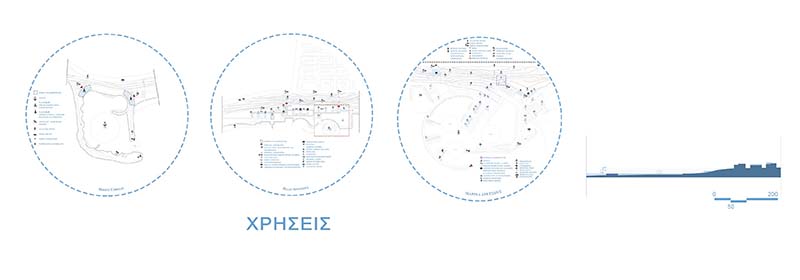

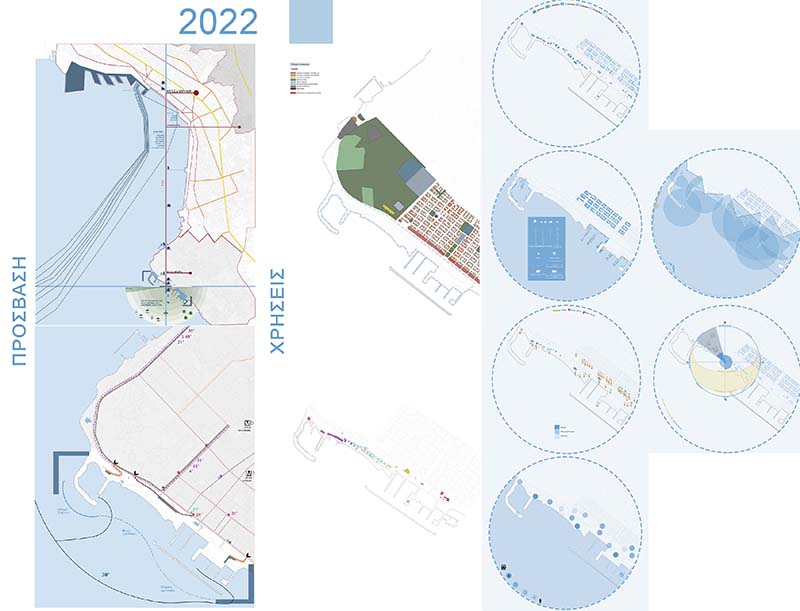

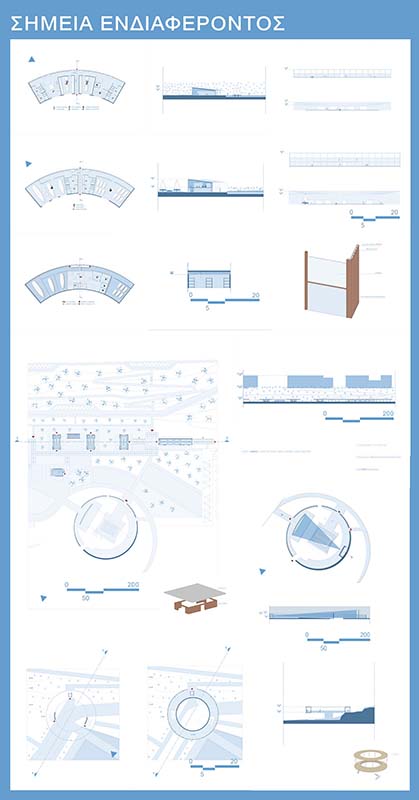

The title of the present thesis is “Back to the future - Aretsou” and was conducted by the student Zoumpouli Isavella Angeliki under the supervision of Professor Gavrilou Evelyn, the academic year 2021-2022.
The coastal front of the Municipality of Kalamaria, in the area of Aretsou, is defined as the study and intervention area. Driven by the modern character and the need for upgrading and reuse of this coastal area, and in combination with the publication of the general Special Spatial Plan (EHS May 2021) of the wider coastal front of the Thessaloniki Urban Complex, the topic of the renovation of Aretsou, part of the aforementioned area, is identified. The area includes the nautical boat shelter of the Nautical Club of Kalamaria in Mikro Embolo, the historic beach and the marina of Aretsou.
Considering the key importance of the front as an “estuary”of the urban landscape at sea and the impact on the daily lives of the residents and visitors to the area, Aretsou is defined as a reference point for both the Municipality and the overall Urban Complex.
The coexistence of the various existing sub-uses located in this area, delimit a place of meeting, transaction and exchange, daily life, culture, sports, entertainment and relaxation that serves the spirit, soul and body of the people who visit it. In this, the insufficient installations and configurations are contrasted, which in some places “disrupt” both the access and the proper use of the space. The history and the occupation with the sea that characterize this section, as an integral part of the commercial and social life of Aretsou, intensify the need for modernization of the coastal front. Finally, the special morphology of the ground creates an obvious slope strip along the beach, which separates connecting the city with the coast, adding to the peculiarity of the study area.
The primary goal is to try to harmonize architectural elements of the past that are reflected in some existing installations of past decades, with those of the most modern waterfront architecture, landscape and sustainability in addition of the rising evolution that sea tourism has to offer nowadays.
Supervisor: Gavrilou Evelyn
Reference Number: 975


